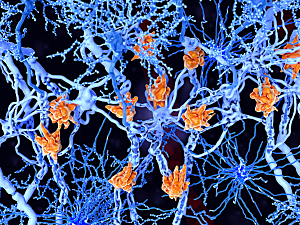Once a patient has been diagnosed with multiple sclerosis (MS), it’s challenging to predict what the disease course might be. Different patient characteristics are correlated with different degrees of disability, and which factors are most important for prognostication is unclear.
Using machine learning, Tanuja Chitnis, MD, a neurologist in the Brigham Multiple Sclerosis Center at Brigham and Women’s Hospital, Gauruv Bose, MD, a neuroimmunology fellow in the center, and colleagues have developed a tool for predicting what the outcome of patients with recently diagnosed MS will be in 10 years. In the Annals of Neurology, they explain the predictions require only 10 pieces of information that are typically recorded routinely in clinical practice.
Methods
Dr. Chitnis, director of the Comprehensive Longitudinal Investigation of MS at the Brigham (CLIMB) comprehensive study, and researchers analyzed data collected between January 1, 2000, and January 27, 2021. The 704 patients included had been seen within three years of MS onset, had complete baseline data available on 37 variables of interest, and had at least 10 years of follow-up.
Every six months, the patients performed a timed 25-foot walk and had a score calculated on the Expanded Disability Status Scale (EDSS). They underwent brain MRI every year and spinal cord MRI every two years.
The researchers first constructed a full multivariable model using all 37 potential predictors of clinical outcomes. Those fell into the categories of demographics, comorbidities, baseline function, baseline MRI results, disease activity over the first three years, and use of disease-modifying therapies. The team then compared the multivariable model with a simplified model they constructed using machine learning.
Multivariable Prediction Model
The research team sought to develop a model that could predict each of three outcomes:
- Retainment of “benign” MS—EDSS ≤2 at year 10
- Development of “aggressive” MS—EDSS ≥6 (requiring a gait aid) by year 10
- Secondary progressive MS—sustained EDSS ≥3 (moderate disability) throughout the 10-year follow-up period
Those outcomes were noted in 71%, 8%, and 21% of patients, respectively. The full 37-variable model was highly predictive of the outcome:
- Benign MS—Area under the receiver operating characteristic curve (AUC), 0.81
- Aggressive MS—AUC, 0.91
- Secondary progressive MS—AUC, 0.81
Simplified Prediction Model
The machine learning process selected 10 variables for predicting the three outcomes: age at onset; EDSS score; pyramidal, cerebellar, sensory, and bowel/bladder signs; 25-foot walk in ≥6 seconds; poor attack recovery; no sensory attacks; and time to disease-modifying therapy.
A prediction model incorporating only those 10 variables actually performed slightly better than the full 37-variable model. The AUC’s comparing the simplified model with the full multivariable model were of the out-of-sample tests. The AUCs were:
- Benign MS—AUC, 0.75 for the simpler model vs. 0.73 for the 37-variable model
- Aggressive MS—AUC, 0.84 vs. 0.81
- Secondary progressive MS—AUC, 0.76 vs. 0.75
Next Steps
To determine generalizability, the researchers plan to validate the 10 predictors identified in this study in an independent cohort. If appropriate, they will integrate the prognostic model into a web-based calculator or a calculator that could reside in the hospital’s electronic health record system.
